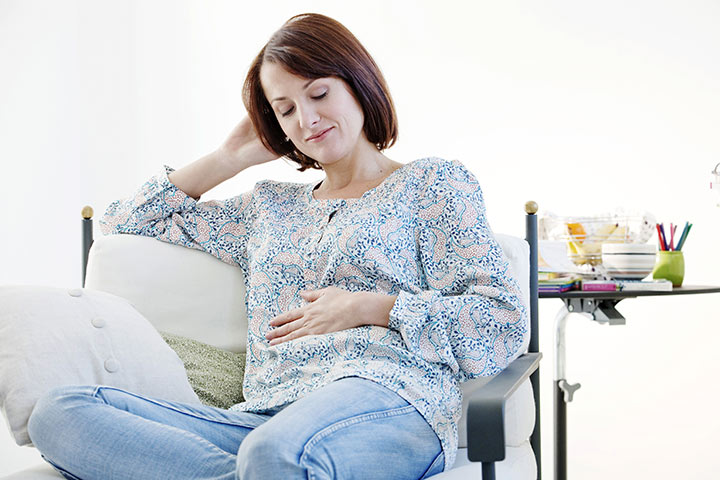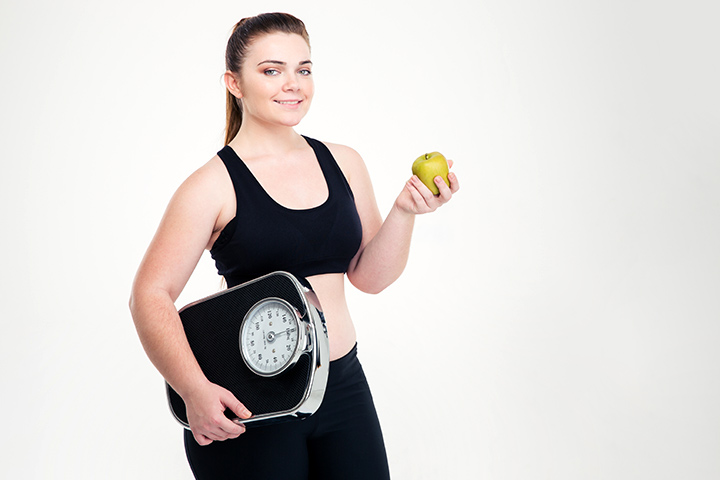You might not feel pregnant, but your body is producing pregnancy hormones, and your baby is growing faster than any other period of gestation. The initial two weeks of pregnancy is a very exciting phase for a woman, but the not-so-exciting part is when the ever-so-popular symptoms of pregnancy begin to appear.
A pregnant mother should now start focussing on changing her dietary and lifestyle practices as the second week is a critical turning point in the development of the baby.
How Is Your Baby At Week 2?
Your micro baby is as tiny as a microscopic chicken egg. The amniotic fluid is comparable to yolk sac (egg white) and embryo to egg yolk (baby-to-be).
The amniotic fluid's primary purpose is to nourish the developing baby until the placenta is fully formed and ready.
Fetal Development At 2 Weeks Pregnancy:
Ovulation:Once the ovulation occurs, your unfertilized egg begins its journey. After being released by the ovary, the egg enters into one of the fallopian tubes through the uterus and awaits fertilization.
Fertilization:
Around 300 sperms enter the fallopian tube, but only one can fertilize the egg. After the sperm penetrates, it triggers an action that makes the surface impenetrable. Each egg and sperm contain 23 chromosomes, half of which the total genetic material is required. The egg carries X chromosome and sperm carries either X or Y chromosome. These chromosomes combine to form a zygote and thus the fertilization is complete.
The egg cell after 24 hours of fertilization seems purple in color. A thick yellow layer form around it that is impenetrable.
Early Stage Following Fertilization:
The developing embryo will signal the pituitary gland in your brain that switches off your menstrual cycle. It produces a human chorionic gonadotrophin (hCG) hormone that overrides your menstrual cycle. It helps maintain progesterone levels which are required for your pregnancy. The progesterone hormone helps embryo to survive in the uterus and therefore for the well-being and development of your baby.
Later around 4 to 5 weeks, the embryo will produce all the hormones that are essential to maintain its life. Though you offer the shelter and nourishment, the embryo behaves like an independent human as far as its genes and hormones are concerned.
Cell Division (1 – 3 Days):
The resulting zygote takes nearly 30 hours to complete its first cell division. The zygote i.e, 0.1 mm in diameter forms a compact ball after dividing into 16 cells. The 16 cells, known as morula (resembling a mulberry) travels to your uterus, therefore entering into the third day. From this morula stage, the cells start specializing. It is also the stage where the cells implant into the uterus lining.
4 Days Following Fertilization:
At this stage, fluid starts forming within the morula that creates a separate thick outer cell layer. It encapsulates the inner cell mass, of which the inner layer is called embryo and the outer layer, the placenta. The whole cell structure consisting of 58 cells in now known as 'blastocyst.'
5 Days Following Fertilization:
The blastocyst spends many days within the uterus cavity before going for implantation. The impenetrable outer surface of morula will now disappear as the blastocyst goes for implantation.
If It Might Be Twins:

Twins can either be identical or nonidentical, and each type conceives differently.
Non-identical twins are a result of 2 separate eggs that are fertilized by different sperms. They might also occur as a result of IVF when the two embryos are placed in the uterus.
Identical twins are a result of a single egg that is fertilized by a single sperm and divides into two embryos. The embryo splits at any stage up to 9 days after fertilization. If the zygote splits within first three days (i.e., you are 2 weeks and 3 days); two separate amniotic sacs and placentas form. If it splits within 4 to 9 days (i.e, at blastocyst stage), there forms separate amniotic sacs that share one placenta. When the split happens after 9 days, the fetuses share both amniotic sac and placenta.
Non-identical twins that come from two separate fertilized eggs depend on the family history. It is believed that twins skip a generation, which is not at all true. And the chances of having twins is slightly higher if you have a close relative who had twins.
The blastocyst prepares itself to embed in the uterus lining. It usually implants around seven days after fertilization and, therefore, pregnancy establishes completely.
Changes Occurring Within Your Body At 2 Weeks Pregnancy:
Your last menstrual period started about 2 weeks ago, and you are now ovulating or you would soon. If you have succeeded in conceiving, it could be two or more weeks you will get a positive pregnancy test result.
Babies are usually born around 38 weeks after fertilization. But, as it is difficult to know when the fertilization has taken place, you should calculate your due date by counting 40 weeks from the first day of your last menstrual period. This is an average length of the cycle, and some women have shorter or longer).
Timing is critical for the conception to happen. You should try to aim at sex around 72 hours before you ovulate or 24 hours after. Like doing so, you are trying to accommodate both sperm, that survives for 3 days and ovum that lives no more than 24 hours after ovulation.
Before you even make sex, you need to calculate the time frame of your ovulation. You can also get awareness on what sexual positions can help your conceive. Many couples need more than a few tries.
Methods That Predict Ovulation:
There are quite a few methods that help to predict your ovulation. If you look for ovulation signs, you can thus predict a fertility window that will help you in determining when you can have the intercourse.
Track Your Period:A typical menstrual cycle lasts for 28 days. Some women may not have the same period cycle and may differ from month to month. Track your menstrual period for consecutive months so that you will know the actual pattern of your cycle. You can either mark your period days once a month or try using a fertility app. This helps you to calculate your ovulation time based on the average menstrual cycle.
During ovulation, your body's basal temperature changes. There are chances for you to become pregnant 2 to 3 days before the temperature rise. You can record your temperature every day at around same time everyday. You should take the temperature when you get up from the sleep. By recording every day, you will understand the pattern and accordingly you can have intercourse before the temperature rises.
Vaginal Discharge:
When you ovulate, the vaginal discharge will change its consistency and texture. It becomes slippery and clear. After ovulation, the consistency turns thick and cloudy and then disappears.
Another way of determining ovulation is through test kit. These test kits use a urine sample to detect the hormones that can predict ovulation. You should follow the right instructions to get accurate results.
Tips For A Better Week 2 Pregnancy:

The main thing you need to do this week is to quit any harmful habits.
- Stop bad habits like smoking, drinking, and drugs as it is essential to a healthy pregnancy, healthy baby and active labor.
- Eat a well-balanced diet and manage your weight.
- Reduce stress and engage in physical activities
- Consult your healthcare provider if you are already taking any medications and also find which habits are good to retain during pregnancy.
- You should take a daily multivitamin that contains 400 micrograms of folic acid as it prevents birth defects in your baby.
Tips For Dad-To-Be:
- Your partner may feel he has no role in pregnancy at this time, but his health and lifestyle affects the future baby.
- He needs to check his nutrition habits, medications, and habits like smoking, alcohol or drug intake
- They can also take prenatal vitamins before conception with doctor's approval.
No comments:
Post a Comment